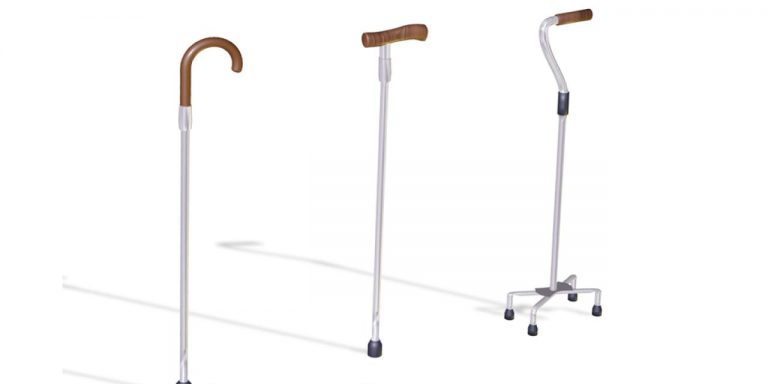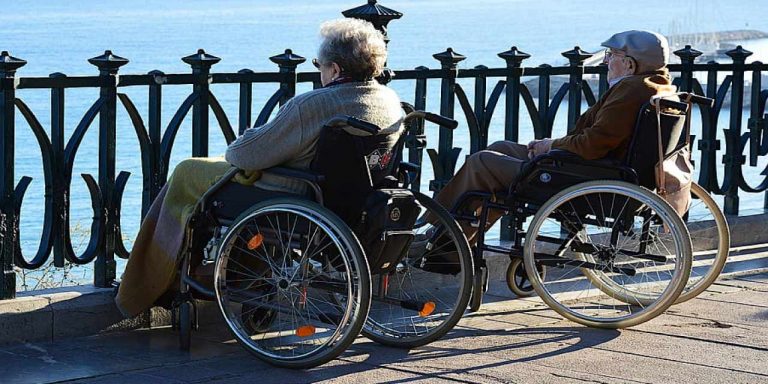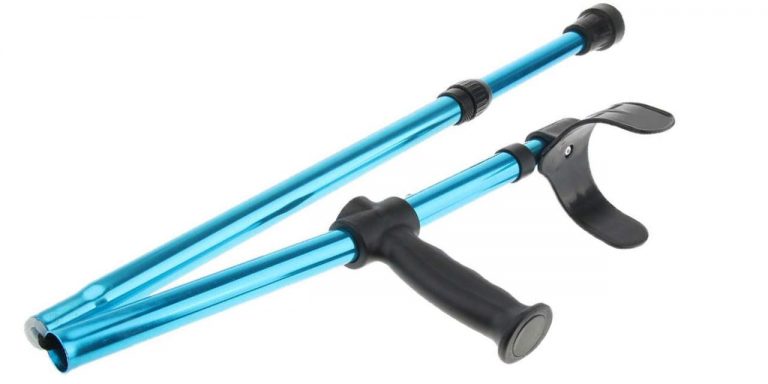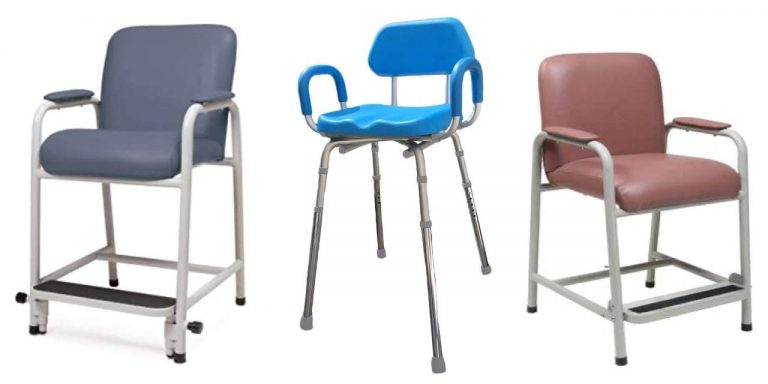Throughout history, walking canes, or walking sticks as they’re sometimes called, have been used for mobility assistance and fashion accessories. In this article we will give you a brief overview of the different types of canes and what you should consider before making a purchase.
HEALTHGADGETSAZ.CO.UK is supported by its audience. When you purchase something through shopping links included on this page, we may earn a small affiliate commission. Learn more
Using a cane can provide a range of benefits, helping alleviate pressure on your joints, decreasing muscle fatigue as you walk, and helping to reduce the amount of pain incurred by being mobile. Additionally, they’re great for providing added stability to those with reduced balance, and helping offer support for people who may be at risk of falling.
Are canes just for the elderly? The fact is individuals of almost any age use canes as a way to compensate for the loss of mobility, disability caused by disease or obesity, or to overcome limited functionality. Canes help these individuals stand from a sitting position, walk with confidence and stability, and restore their sense of independence.
Articles Related to Mobility Aids..
There are various reasons for using canes. The first would be an accident, like a broken leg or foot that affects the mobility of the lower leg. Surgery on the lower extremities, or a knee or hip joint replacement, may require a person to use an assistive device. Canes overcome balance problems and weak legs, and restore the person’s sense of security. A stroke, or a disease like diabetes or multiple sclerosis, may gradually decrease someone’s mobility level, making a cane a medical necessity. Finally, with the increase of obesity and weight issues, many individuals would not be able to stand or move without the use of a cane.
Canes are available in a wide variety of sizes, colors, styles, and designs to best fit both your needs and your tastes. Some people may feel embarrassed about the need to use a walking aid, but canes can be just as stylish as they are assistive, making it easier for a user to adapt and comply with using one.
AD – Related to Walking Canes– Continue Reading below…
Vive Folding Cane – Lightweight Foldable Walking Stick for Men & Women
Providing additional support and stability while walking on any surface, the Vive folding cane is durable… Learn more @ amazon.co.uk
When deciding if a cane might be right for you, consider the following:
- Can I walk without added support, such as a railing, every day?
- Does walking cause pain in my joints, limbs, and muscles?
- Do I ever feel like I may fall when walking without any form of assistance?
- When I’m walking, do I constantly search for some form of support to provide balance and stability?
- Am I able to easily walk across uneven ground, or descend and ascend stairs with ease?
- Do I opt out of things because I am concerned I will fall or that I am physically unable to complete the task due to walking?
- Does walking tire me more than it should due to extensive physical exertion?
If the answer to any of these questions is yes, it may be the time to start considering an assistive device, like a cane. Unfortunately, choosing a cane isn’t as simple as just picking one you like and then using it; it’s important that you understand your needs and how those translate into appropriate support, and then also make sure you know how to use it properly to ensure safety and comfort.
In order to help you sort through all this information, we’ve laid out everything you need to know to make the best choice and stay safe and comfortable while walking. We’ll guide you through, and then give you some of our best recommendations to make your shopping experience totally effortless.
What are the different types of walking canes?
Straight or Single-Point Canes
Straight Canes are the most common type of cane, and are ideal for users who just need a bit of added stability or unweighting of one side of the body. They normally feature a single tip, generally in the form of a removable or replaceable rubber tip, and are available with several different kinds of handles.

Folding Canes
For easier travel and convenient portability, folding canes are the best option, providing sturdy support for mobility and then folding down into a compact parcel for easy storage. Often these canes feature an aluminum construction and an angled handle, making them ergonomic and lightweight as well.
Folding canes are most often available in one of two designs: the first is one that can be folded into smaller sections, and the second is one that allows upper sections to securely slide into the lower section. Both are equally convenient, but it should be noted that the lightweight design of these canes means they often have a lower weight capacity than other styles, and may not be best for heavier users.

Bariatric & Heavy Duty Canes
For larger or heavier individuals, bariatric and heavy duty canes are the perfect solution. Heavy duty canes offer better support for users with more weight, as they feature a sturdier structure and higher weight capacity. They are designed to withstand more stress and pressure than a standard cane as well, taking into consideration the greater durability needed in addition to the weight.
Most often bariatric canes are constructed with aluminum or steel for maximum strength, and they are made with an offset handle to better distribute the weight of the user along the shaft for less pressure on both the cane and the hands.

Quad & Three-Point Canes
The hallmark of these canes is that, unlike straight canes, quad and three-point canes feature wider bases with either three or four feet. They are better for users who require a bit more support and stability while walking, and subsequently feature a bulkier base. They also have the ability to stand up when let go, however, which can be very convenient for performing a variety of tasks like opening doors or grabbing something from a shelf.
These canes are designed primarily to balance more support with greater comfort, distributing the user’s weight along the cane and then through three or four separate feet to promote better balance and a cane that can offer greater support.

How do I choose a cane?
In order to make sure you get the most out of your cane, and remain safe and comfortable while using it, it’s important that you take a few different elements into consideration while you shop. These will help you make sure that you get not just the cane that you like the most, but the one that’s the most functional for your life.
Selecting a grip
When choosing a cane grip style, the most important thing to consider is your hands. Do you experience pain? Joint stiffness? Are your hands large or small? Depending on your answers, different grips may be more or less ideal. Generally, foam or padded grips are more often recommended, helping relieve pressure on the hand and fingers. Larger grips are often better for those who have trouble applying a lot of grip force.
As far as shape is concerned, you’ve got a wide range of options. While cane handles can be broken down into very specific shapes and styles, we’ll just label them a bit more broadly as curved, angled, round, or offset.
- Curved – These are the traditional ‘shepherd’s crook’ style cane, featuring a smooth, rounded curve for the handle. The curved shape allows them to be easily hung on hooks and the backs of chairs to enable easier storage or resting in different public areas like restaurants and bathrooms. They are, however, somewhat hard on the hands for users who may have pain or stiffness in those joints.
- Angled – Whether a right angle, or a more curved version of that same shape, these canes are designed to be a bit more ergonomic for user comfort and control. Including derby, fritz, ergonomic, palm grip, orthopedic, and even animal-shaped handles, the angled handle is the most versatile of all the options, and therefore gives you the most freedom in choosing something to fit your personal taste.
- Round – Often designed more for fashion than for support, round-headed canes feature a knobbed top rather than a handle, meaning they provide less support and can be harder on the hands, though they can be good for special occasions.
- Offset – This type of handle is the most ergonomic of the styles available, designed to distribute the user’s weight fully and evenly along the shaft of the cane all the way down to the tipped base. They also include a soft grip rubber handle that allows for a more comfortable grip. This is most often the preferred choice for people with greater mobility concerns or pain in the hands.
Choosing the proper grip can have a huge impact on your comfort and mobility, so it’s important to make sure that you test a few out first and see what feels the best for you. The right grip can help relieve unnecessary stress on joints, and prevent pain and discomfort. You’ll be able to tell if a grip isn’t a good match if you notice that you’re experiencing pain or numbness in your hands and fingers.
AD – Related to Walking Canes – Continue Reading below…
Vive Cane Tip – Quad Rubber Replacement Foot Pad for Walking Canes
Providing greater balance and stability, the Vive self standing rubber cane tip is easily installed on a standard or folding cane….. Learn more @ amazon.co.uk
Checking the fit
A properly fitted cane can often be the difference between help and harm. Although many walking canes are adjustable, many others are not, so it’s important to make sure your cane is properly measured and fitted for ideal support.
To measure yourself for a cane, you’ll need the help of a partner. You should stand straight up, with arms relaxed at your sides; there should be a slight natural bend to your elbow. Then, your partner should measure the distance from the floor to your wrist joint, and this should be the height of your cane.
Additionally, it’s important to make sure that, when you’re holding your cane, your elbow bend is at the correct angle. To check, you can stand up straight and hold your cane in your hand like you normally would. The bend in your elbow should be about 15 degrees. You can check this yourself in a mirror, or have a partner check for you.
These measurements are vastly important: if the cane is too long, it can be difficult to pick up and use, while if it’s too short, you may develop poor posture, or it may throw off your balance.
Checking the cane tip
The tip of the cane is meant to provide better traction on most floor surfaces. The rubber construction basically functions like the tires on a car, gripping the floor and helping you stay stable and supported without sliding.
In order to ensure that your cane is safe and easy to use, your tip should have a bit of give to it, but be mostly stiff and stable. The base tread of the tip should be in good condition. If you cane tip appears worn, torn, or broken, it’s important that you replace it as soon as possible.
How should you walk with a cane?
To properly walk with your cane, you should follow these steps:
- Hold your cane in the opposite site from your injury or weakness.
- Move the cane simultaneously with the opposite leg; this will be your injured or affected leg.
- Channel your weight through the arm holding the cane as you need to
- Always have your stronger leg take the first step, especially when shifting up and down steps or non-level surfaces.
Disclaimer: All content, including text, graphics, images and information on this site is not intended or implied to be a substitute for professional medical advice, diagnosis or treatment. Content on or available through this web site is for general information purposes only. It is in no way a substitute for qualified medical opinion. Always consult a specialist or your own doctor for more information.









